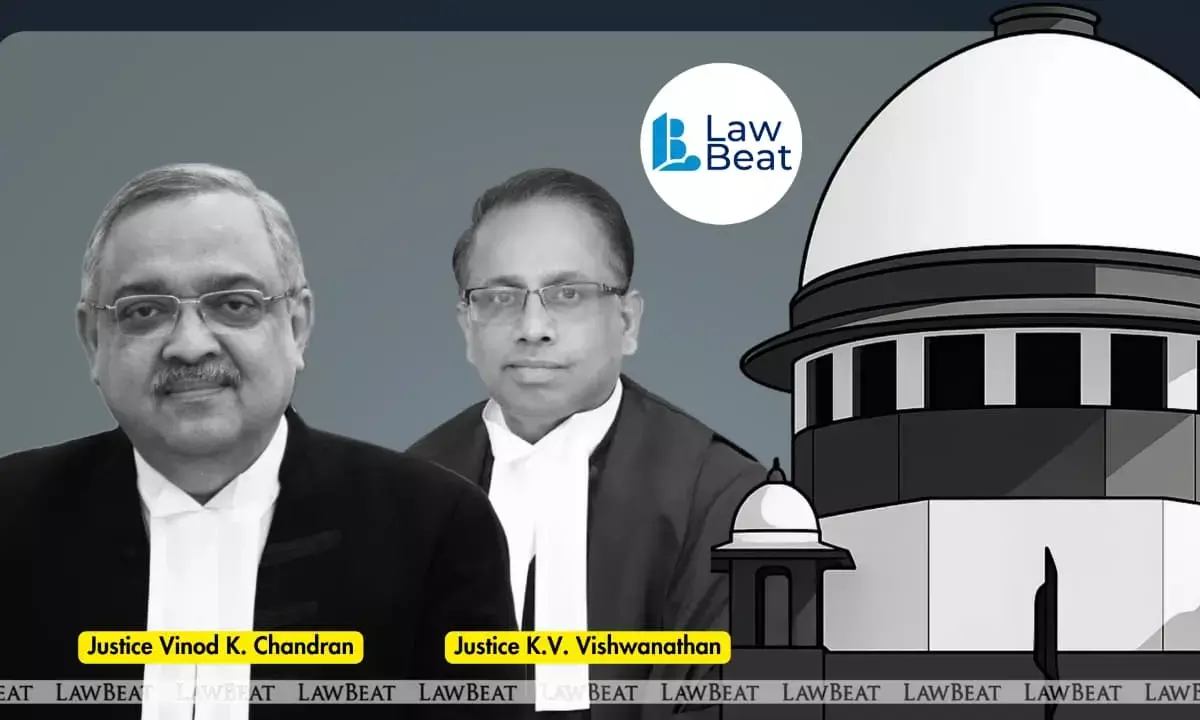‘Something More Than What Meets the Eye’: SC Acquits Man Accused of Killing Mother

The Supreme Court of India acquits a man convicted of his mother’s murder
The Supreme Court, on October 7, 2025, acquitted a man in a 2010 case of killing his own mother after finding that the genesis of the prosecution case was not convincing and medical evidence had not conclusively established homicide.
A bench of Justices K V Vishwanathan and K Vinod Chandran allowed an appeal filed by Nilesh Baburao Gitte against the Bombay High Court's judgment of July 23, 2013, which upheld his conviction and sentence of life term in the case. The High Court, however, had acquitted another accused, Balasaheb Gangadhar Gitte.
Examining the appeal in the case based on circumstantial evidence, the bench found that there was a mystery surrounding the genesis and origin of the prosecution case, as a police officer, having received a tip off, along with other personnel, reached the cremation site on July 22, 2010 and noticed the injuries and strangulation mark on the body, lying on funeral pyre.
"A lingering doubt still remains in our mind as to why further leads from that time, place and alleged event were not picked up and why no further investigation as to who organized the cremation was carried out,'' the bench said.
Court pointed out that no leads from the crowd, who gathered there, had been picked out and nobody had been examined in court.
There is no evidence to show that the present appellant was present at the site of the first attempted cremation, or any of the relatives of the deceased, court noted.
The bench stated that the police officer's evidence regarding receiving a call from an unknown person, even if true, raised questions as to "why no effort had been made to track down the said person to elicit more details or at least to investigate from the members of the crowd and put before the court as to what their version of the story was," indicating "that there was something more than what met the eye in this case".
Court noted that in view of the deposition of the doctor who conducted the post-mortem, a "serious doubt arose as to whether at all the deceased died a homicidal death".
The bench also took note of a document revealing that the deceased was treated for relapsed schizophrenia. The doctor's admission that hanging could not be ruled out in the absence of a ligature mark on the back of the neck, and the further reinforcement "that in strangulation ligature mark should be present all around the neck," led the bench to conclude that this was not a case where it could be safely opined that the death was by homicide.
"There is no definite medical opinion and in view of the considerable ambiguity in the evidence of the doctor, death by suicide, cannot be said to be completely ruled out," the court held.
Court further noted that another accused, Balasaheb, had since been acquitted, and the alleged recovery alone was held insufficient to sustain a conviction and the State had accepted the acquittal.
The bench also found positive evidence that the accused lived separately and that none of the witnesses spoke about the appellant's presence at the time of the first alleged attempt to cremate the deceased.
Court rejected the prosecution's contention that the appellant owed an explanation as to how the deceased suffered serious injuries. The bench observed, "Nothing has been demonstrated by the prosecution to show that there was any fact about the alleged incident which was especially within the knowledge of the appellant".
Court also found that the appellant had made a strong case that it was his uncle who had masterminded the prosecution against him and to set up a case that he murdered his mother for the purpose of property. It also pointed out the statement of the uncle was recorded after 50 days, a delay, which was not explained.
In fact, the angle of property adverted to by the uncle is not convincing for the reason that the appellant too has a similar allegation against him, it said. "We are not able to believe this witness (uncle) on the motive attributed to the appellant,'' the bench said, noting the appellant had his father as well as two sisters alive.
It was noted that it was not as if the property would "immediately devolve on the appellant in the event of the alleged murder by him going undetected" upon the deceased's death. Court also observed that no statement was recorded from even the immediate family of the deceased.
With regard to the contention that the appellant never raised hue and cry about the death of his mother, the bench said, the failure to investigate the alleged crowd which had assembled and disbursed at the first alleged attempted cremation of the deceased baffled one’s comprehension.
"The recoveries alleged, to say the least, do not lend assurance to our minds about their genuineness,'' the bench said, holding that the courts below had fallen into a serious error in convicting the appellant on the basis of the evidence on record.
Case Title: Nilesh Baburao Gitte Vs State of Maharashtra
Judgment Date: October 7, 2025
Bench: Justices K V Vishwanathan and K Vinod Chandran
